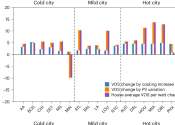Google fires more workers who protested its deal with Israel
Google fired at least 20 more workers in the aftermath of protests over technology the company is supplying the Israeli government amid the Gaza war, bringing the total number of terminated staff to more than 50, a group ...
Apr 23, 2024
0
5









